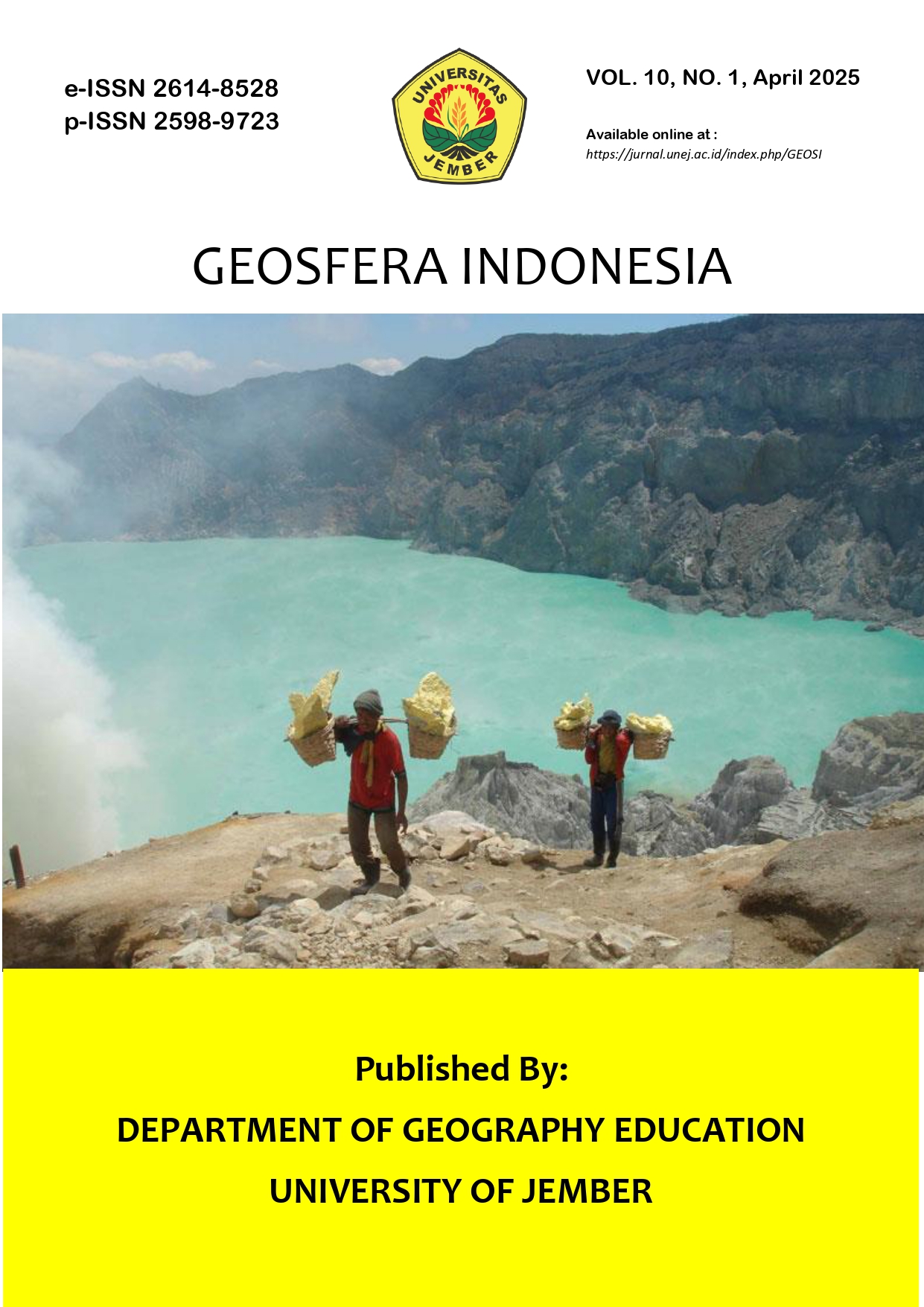Landslide Hazard Mapping using Weight Overlay Based-GIS with Multi-criteria Evaluation Techniques in Tawangmangu District, Indonesia
DOI:
https://doi.org/10.19184/geosi.v10i1.44539Keywords:
AHP, GIS, Landslide, TawangmanguAbstract
Landslides are natural events that can be worsened by human activities, leading to significant destruction of life and property. In Tawangmangu District, situated on the slopes of Mount Lawu, the landslide risk is amplified due to factors such as volcanic soil, steep terrain, and high rainfall. This research seeks to map landslide hazards in the area by utilizing a Geographic Information System (GIS) and the Analytical Hierarchy Process (AHP), combining both static and dynamic factors contributing to landslide occurrences. The study considers seven critical factors: slope, distance from roads, geology, land use, soil type, rainfall, and proximity to geological faults. Expert opinions are used to assign weights to these factors, which are then integrated into a GIS model to assess susceptibility to landslides. The area is classified into five risk zones. The results show that 21.97% of the region faces high and very high risks, while 39.57% is moderately vulnerable. The highest-risk areas are those with steep slopes and significant human activity, such as road construction and land-use changes for tourism. Model validation, comparing the predicted landslide zones with actual landslide locations, shows that over 75% of landslides occurred in high and very high-risk areas, confirming the model's accuracy. This study underscores the importance of sustainable land use planning, effective infrastructure management, and vegetation preservation in reducing landslide risks. Future mitigation efforts should focus on monitoring land use changes, strengthening vulnerable infrastructure, and enhancing early warning systems to minimize further landslide damage in the region.
Downloads
Downloads
Published
How to Cite
Issue
Section
License
Copyright (c) 2025 Geosfera Indonesia and Department of Geography Education, University of Jember

This work is licensed under a Creative Commons Attribution-ShareAlike 4.0 International License.




